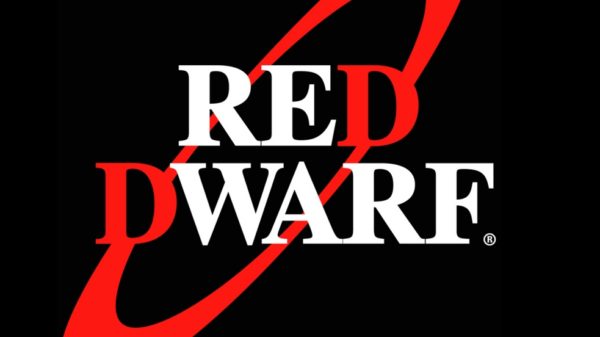My love of Red Dwarf was at its peak around ten years ago. I bought each series on DVD and watched them over and over again, before eventually getting a bit fatigued and moving on to something else. In the time that has passed since then, I’ve hardly revisited the ‘small rouge one’ at all. So now that series XII is approaching, due to land on Dave in autumn, I’ve decided to rewatch the entire show from the start…
There’s a moment in Red Dwarf I where Lister tells Rimmer “There’s nothing out there, there’s nobody out there. No alien monsters, no zargon warships, no beautiful blondes with beehive hairdos who say ‘show me more of this earth thing called kissing’”. And in this particular series, he’s right. When I think of Red Dwarf, what usually come to mind are space-hopping adventures and big sci-fi concepts, but there’s very little of that in series I. It’s easy to forget the show’s roots as a sort of ‘Odd Couple in space’, about two very different men forced to live together.
From The Start
The opening episode does a great job of setting up the ‘sit’ of the sitcom. Before the pivotal point of Lister waking up from stasis to find that “everybody’s dead Dave”, we learn almost everything we need to know about his and Rimmer’s personalities, relationship and forces that drive them. The latter being Rimmer’s obsession with rising through the ranks and Lister’s desire to run a farm on Fiji (“I’m gonna get a sheep and a cow and breed horses”), both of which are pretty much abandoned in subsequent series. As an aside, I was surprised in this episode to recognise Todd Hunter as Robert Bathurst, aka the permanently dressing-gowned Ed Howzer Black in Toast of London!
Other than ‘Future Echoes’, in which Lister starts seeing things before they’ve actually happened, plotlines in Red Dwarf I are more about the characters’ psyches than about sci-fi elements. In ‘Confidence and Paranoia’ two aspects of Lister’s personality are literally brought to life in human form, and in ‘Waiting for God’ Lister struggles to come to terms with the fact that he has become a god to the cat race while in stasis. Meanwhile ‘Balance of Power’ revolves around Lister attempting to become a chef in order to outrank Rimmer, and ‘Me2’ sees Rimmer try and fail to live with an identical copy of himself.
Whereas later series would feature a new environment and/or alien creature in almost every episode, Red Dwarf I takes place entirely within the confines of the ship. When at one point a mysterious pod arrives, Rimmer fantasises about the aliens that could be living inside, only to find that it’s full of nothing but garbage. From the sets to the costumes, series I has a dull, grey aesthetic, adding to the sense of loneliness and futility that pervades throughout.
Another striking thing about series I is just how hostile and nasty the relationship between Lister and Rimmer is. They aren’t exactly best friends in later series, but at this point they are particularly bent on trying to irritate and one-up each other. In fact they despise each other so much that in ‘Future Echoes’ Rimmer seems genuinely gleeful at the idea of witnessing Lister die, and later Lister can’t wait to watch a video recording of Rimmer’s death.
Cat
As a last thought, it’s a lot of fun to see Cat behaving like an actual cat in this series. He’s obsessed with fish, trying to catch Lister’s robot goldfish with a net and saying “fish” to a vending machine until he’s got so many plates that he can barely carry them. We also see him licking his clothes to clean them and exhibiting other feline behaviours, most of which he doesn’t retain later in the show.
Next week I’ll be looking back at Red Dwarf II… until then smoke me a kipper, I’ll be back for breakfast!

